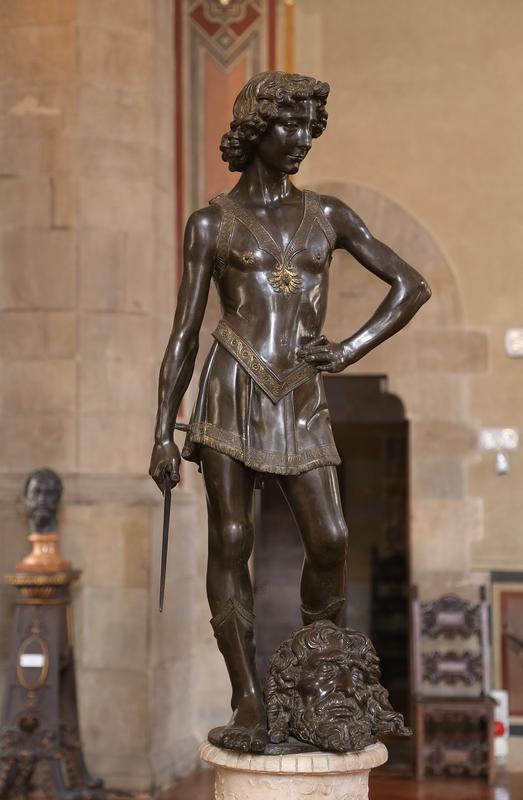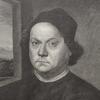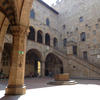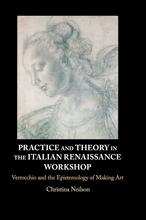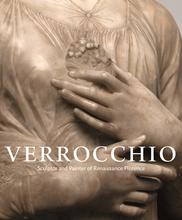More about David
- All
- Info
- Shop

Contributor
The story of Andrea del Verrocchio’s David with the Head of Goliath reads like an art conservator wrote a detective novel.
In this case, the mystery is what exactly did this statue look like in 1473, as Verrocchio initially intended it? The first discovery the conservators at the National Museum of the Bargello in Florence, Italy made had to do with the head of Goliath and his long, lush curls. Specifically, they found that a section of those delightful spaghetti curls was missing. The head, they realized, was not as Verrocchio had actually placed it. After the Medici family commissioned the statue, the conservators determined, they moved the head between David’s legs in order to make it fit beside the door of Sala dei Gigli in the Palazzo Vecchio, the town hall in Florence. You would think a patron of the arts would have a bit more respect, but alas. When they moved the decapitated head to its original position, they realized something else. With his feet freed, it became clear that David was depicted in motion, moving forward away from the head, making this already famous Renaissance piece revolutionary for its time, as bronze sculptures normally presented their subjects standing and static.
The mystery doesn’t end there, though! Once the conservators got this thing in the lab, they couldn’t stop making discoveries. Using a fancy laser system, they found that the statue of David had been coated in gold leaf, glued on in a technique used sometimes for indoor statues. The villain Goliath, on the other hand, had no gold. The third and final discovery, as the conservators chemically cleaned layers of patina painted on over the years, was that David was supposed to have thick veins that popped out of the skin of his arms. This gave our hunky hero a stronger appearance, his muscles looking more like what you'd expect for someone who brought down a giant with only a slingshot.
While there have been many depictions of David over the years, this piece is most frequently compared to another commissioned by the Medici family just twenty years before: Donatello’s infamous David. Both are in the Bargello in Florence, but the biggest distinction between the two is the movement. Donatello’s David lingers with the slayed head as if considering what he’s done, while Verrocchio’s moves full-steam ahead with confidence. A second distinction is in the clothing. Donatello’s is mostly nude, while Verrocchio’s is wearing a fancy gilded outfit, accented with the aforementioned gold leaf. While we're on the subject of Teenage Mutant Ninja Turtles, a young Leonardo da Vinci, apprenticing under Verrocchio, played the role of assistant on this piece.
One last thing worth mentioning here is that the sword was missing entirely from the piece, and what appears now is an estimation of what the sword may have looked like. Perhaps it, too, will one day be discovered!
Sources
- “David.” David by Andrea del Verrocchio. Accessed July 24, 2020. http://www.andreadelverrocchio.com/david/.
- “National Gallery of Art.” Andrea del Verrocchio: A Closer Look. Accessed July 24, 2020. https://www.nga.gov/features/verrocchio-closer-look.html.
- Vogel, Carol. “Goliath Smote, Then Smote Again; New Look at a Sculpture of David Finds His Foe's Head Misplaced,” February 11, 2003. https://www.nytimes.com/2003/02/11/arts/goliath-smote-then-smote-again-….
Featured Content
Here is what Wikipedia says about David (Verrocchio)
Andrea del Verrocchio's bronze statue of David was most likely made between 1473 and 1475. It was commissioned by the Medici family. It is sometimes claimed that Verrocchio modeled the statue after his pupil Leonardo da Vinci.
The statue represents the youthful David, future king of the Israelites, triumphantly posed over the head of the slain Goliath. The bronze was initially installed in Palazzo Vecchio in 1476. The ornament on David's leather tunic includes pseudo-Kufic letters imitating Arabic script.
The placement of Goliath's head has been a source of some debate for art historians. When exhibited at the National Gallery of Art, the head was placed between David's feet, as is the case in the statue's permanent home, the National Museum of the Bargello, in Florence, Italy. Another school of art historians have suggested that Verrocchio intended for Goliath's head to be placed to David's right, pointing to the diagonals of the ensemble. This placement was temporarily arranged at the National Gallery of Art, as well as Atlanta's High Museum, among others.
David was intended as a symbolic representation of Florence, as both were more powerful than they appeared, and both the shepherd boy and Florence could be viewed as rising powers.
The Victoria & Albert Museum in London also owns a plaster cast of Verrocchio's David.
Check out the full Wikipedia article about David (Verrocchio)

